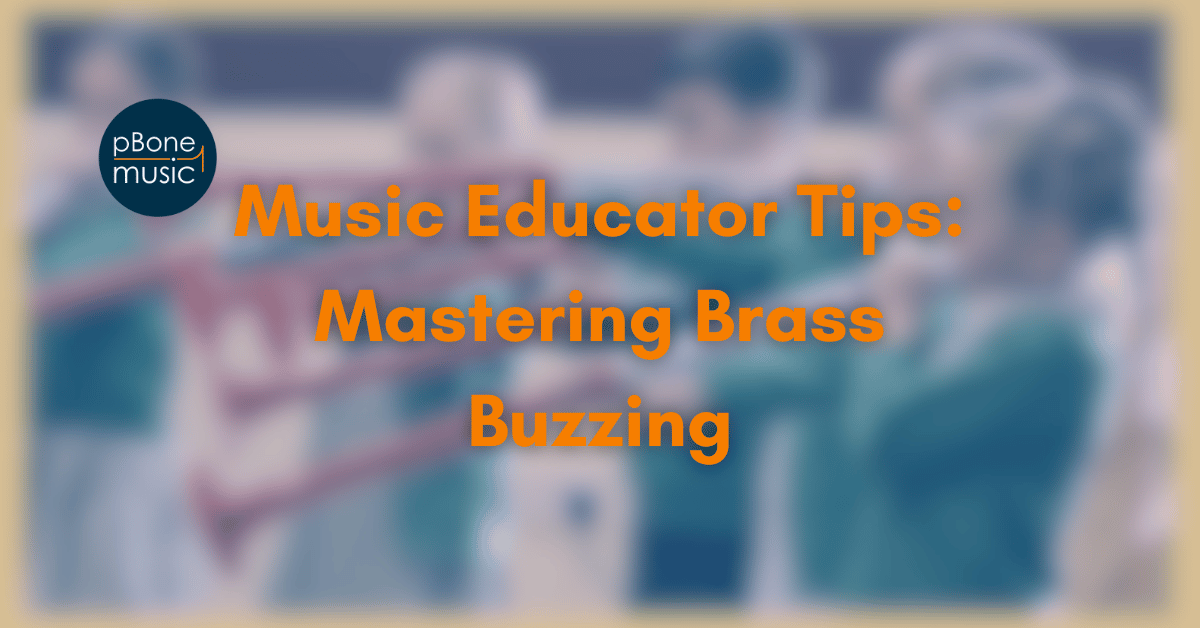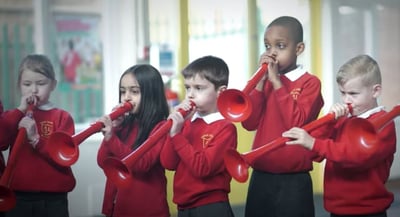
Topics:
April 17th, 2024
2 min read

Hello to all the budding brass enthusiasts and their cheerleading parents! If you've ever dreamed of your child filling the house with the sweet sounds of a trumpet or trombone, you're in the right place.
Today, we're diving into the delightful world of brass buzzing, guided by the expertise of Chris Fower. Getting that first buzz is a crucial, exciting step in any young musician's journey, and we're here to make it as simple as possible.
First things first: what exactly is a brass buzz? Imagine your child blowing a raspberry, but with style! It's the sound produced when the lips vibrate together inside the mouthpiece of a brass instrument like a trumpet or trombone. This vibration sets the air humming down the instrument's tube, which help to produce the first magical notes of music.

1. Understanding the Buzz
- What You Need: Just their lips and a brass instrument's mouthpiece.
- The Buzz Concept: Teach them it’s like making the sound “um”, which uses their lips to create a gentle vibration.
2. Humming the Right Way
- Exercise: Have your child practice humming with an “um” sound, feeling the shape and movement around their lips.
- Purpose: This builds muscle memory and lip shape, preparing them for buzzing.
3. The transition from Humming to Buzzing
- Method: Encourage them to continue humming and then gently blow air through their lips.
- Goal: They should feel their lips naturally start to vibrate apart, creating a buzz.
4. Introducing the Mouthpiece
- How to Hold It: Place the mouthpiece lightly on their lips, ensuring it's centred both horizontally and vertically.
- Positioning: Teach them to hold it at a slight downward angle—about 10 to 15 degrees. This helps direct the airflow correctly.
5. Blowing the First Buzz
- Technique: With the mouthpiece in place, have them blow through their "um" lips.
- What to Listen Out For: A clear, vibrating sound indicates a successful buzz.
6. Practice Makes Perfect
- Encouragement: Celebrate every little sound! Each buzz gets them closer to mastering their instrument.
- Tips: Regular short practice sessions are more effective than rare long ones. Keep it fun and stress-free!
There you have it—a simple and fun way to introduce your child to the world of brass instruments. By following these steps and embracing the journey, your little one will be on their way to creating beautiful music. So grab that mouthpiece, muster up some "um"s, and let the musical journey begin!
If you have a younger child looking to make their first buzz, or maybe want to help your beginner trombone or trumpet player crack that tricky first step, why not try pBuzz? The clue is in the name: pBuzz helps kids master the basic buzzing that brass players need in a fun and accessible way. That's why children across the world are making their first musical memories with our beginner instrument.
There you have it—a simple and fun way to introduce your child to the world of brass instruments. By following these steps and embracing the journey, your little one will be on their way to creating beautiful music. So grab that mouthpiece, muster up some "um"s, and let the musical journey begin!
Adam is the Content Manager at pBone Music. This should mean that he’s the ideal person to write about himself, but he finds boasting in the third person a little awkward. He honed his word wizardry with a degree in English Language and Literature at the University of Leeds. He has since written copy for clients and businesses across the land, from awards to something beginning with “z”. He also spent a number of years as a musician. He has written pop songs and even jingles for kids, performed more first dances at weddings than you could shake a pBuzz at, and once played a gig for a pie company at The Etihad Stadium in Manchester. When he’s not reminiscing about those good old days, you might find Adam enjoying the football (although as an Everton fan, that can be difficult). He also loves spending time with his partner, Jen, and his family and friends, and sincerely hopes they feel the same way.
Topics: